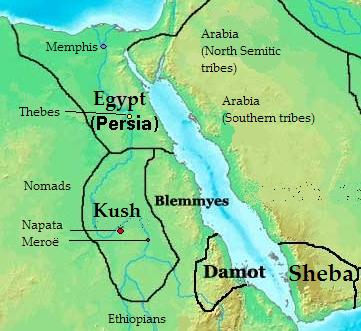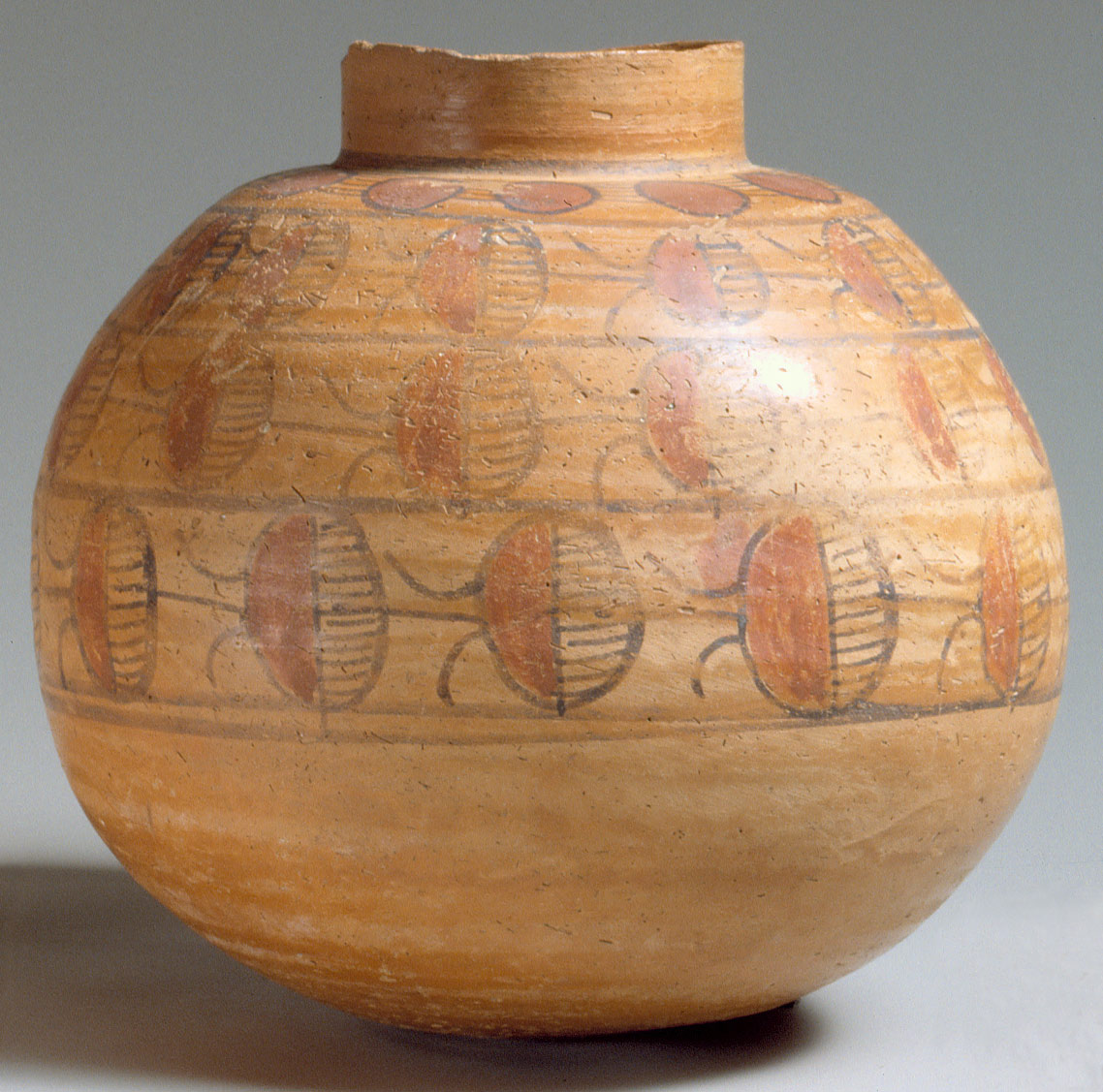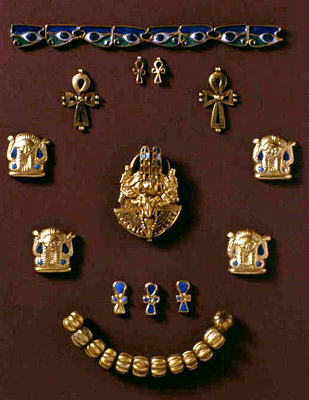Geography
 Meroë is located on the east bank of the Nile River in Sudan. The city of Meroë was the center of Nubian civilization during the classical era. Most of Sudan is a vast featureless plain, except for in the east and west where there are mountains. It is dominated by the Nile and its tributaries.
Meroë is located on the east bank of the Nile River in Sudan. The city of Meroë was the center of Nubian civilization during the classical era. Most of Sudan is a vast featureless plain, except for in the east and west where there are mountains. It is dominated by the Nile and its tributaries.
Sources: http://en.wikipedia.org/wiki/Meroë, http://en.wikipedia.org/wiki/Kingdom_of_Kush, http://workmall.com/wfb2001/sudan/sudan_geography.html, Ways of the World: A Global History with Sources by Robert W. Strayer (Pg. 284-86).
Religion & Beliefs
Religion in Meroë was polytheistic. It had clear beginnings in Egyption belief, sharing gods such as Isis, Amun, Horas, and Bas. They also had their own dieties. Meroë used pyramids as burial sites. These pyramids were commonly built over tombs containing bodies that were either burned or not mummified.
Sources: http://en.wikipedia.org/wiki/Meroë, http://suite101.com/article/meroitic-beliefs-and-religion-a196549, http://en.wikipedia.org/wiki/File:Sudan_Meroe_Pyramids_30sep2005_2.jpg
Arts
Meroë was very wealthy in gold, and had a lot of exports in jewelry and textiles. They also made statues of their dieties,



Sources: http://www.egyptsearch.com/forums/ultimatebb.cgi?ubb=get_topic;f=8;t=006932, http://www.metmuseum.org/toah/works-of-art/08.202.47, http://www.rom.on.ca/exhibitions/wculture/nubia.php, http://vigilantcitizen.com/vcboards/viewtopic.php?f=17&t=8418&sid=fa99343366270b5b24d094d3e6ad6ecb&view=print
Social Development
The cities of the Nile, including Meroë, were patriarchal societies. Peasants and Slaves contributed most of the labor, and individuals had the opportunity to gain a higher role in society through their professions. Wealthy and powerful people had elaborate tombs built for them-- the common people did not.
Sources: http://apworldhistorywiki.wikispaces.com/Egypt+%28complex%29+%2869-80%29+2
Politics
Meroë had an all-powerful religious monarch, who was occasionally female. Although rulers were all powerful, historians believe that there was a "greater element of consent by the people" than ever before seen in Egypt. Monarchs came from a single royal family, but inheritance of power was not automatic; it required "agreement of nobility and the final approval of the priesthood." The mother of the ruler also had a lot of influence. Rulers were buried along with many human sacrificial victims.
Sources: l, The Ways of the World: A Global History with Sources by Robert W. Strayer (Pgs. 284-86).
Economics
The city of Meroë had specialized workers such as merchants, weavers, potters, and masons. Meroë had extensive trading connections via the Nile and camel caravans. Main exports came from mining and hunting. both of these activities were under direct control of the king. Farmers did not have to depend on irrigation from the Nile because of the dependable rain season, so they were able to spread out more and be more profitable. They were also under less direct control from the government.
Sources:
Demographics
The population of Meroë was mainly made up of cattle-herders and "peasant cultivators." They lived in houses made of mud and reeds that were grouped in small villages and ruled over by local chiefs or family clans. They were not under very strict government control and "probably paid their taxes in the form of annual tribute to the king." Herders were semi-nomadic.
Sources: http://wysinger.homestead.com/nubianpolitics.htm
Intellectual Development
Although the Kingdom of Meroë originally had much Egyptian influence, as seen by their shared gods and writing systems, they slowly began to draw away from Egyptian culture. Besides creating and worshiping their own gods, they also formulated their own system of writing, which is still undeciphered.
Sources: The Ways of the World: A Global History with Sources by Robert W. Strayer (Pgs. 284-86)
Technology
The most prominent industries in Meroë's civilization was the smelting of iron and the manufacture of iron tools and weapons. The area around Meroë was full of fuel for the fires that were used in this iron technology.
Sources: The Ways of the World: A Global History with Sources by Robert W. Strayer (Pgs. 284-86), http://www.allempires.com/article/index.php?q=Iron_age_Meroe

